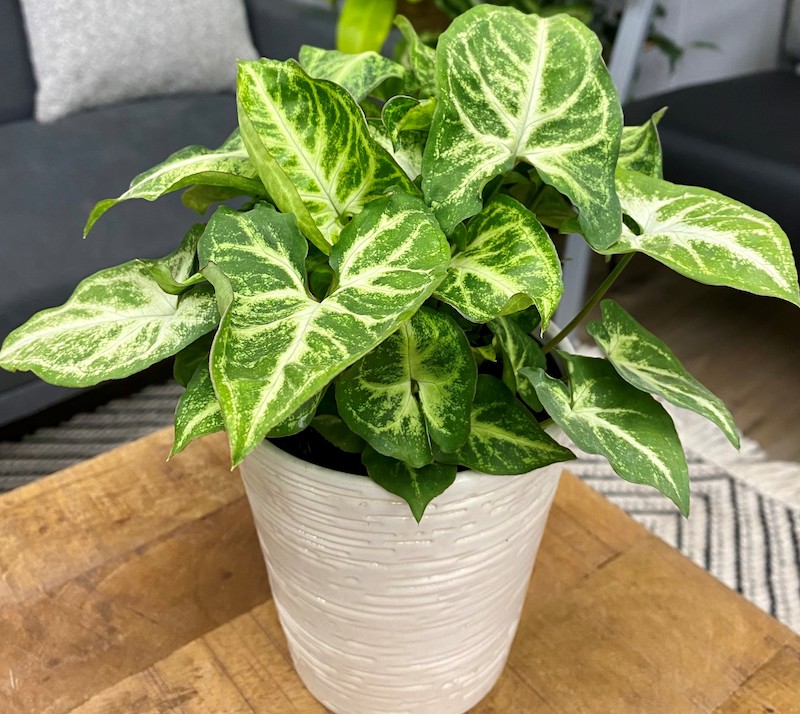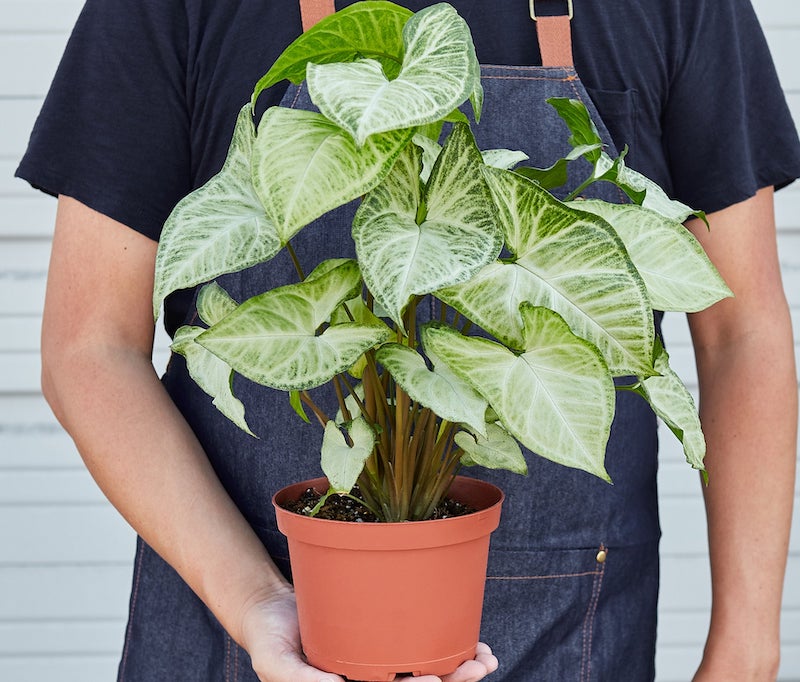Arrowhead Plant is a climbing or trailing plant that can grow quickly with proper care. As fast-growing houseplants, Arrowhead Plants often outgrow their space and must be repotted annually or at least every other year. Upgrading an Arrowhead Plant to a new pot gives the plant room to spread out and is an opportunity to refresh the soil to support continued growth. Repotting Arrowhead Plant is vital for a healthy plant, but it's also common to repot to ensure the container matches your decor and fits into your space.

Potting Arrowhead Plant
Selecting the proper container is essential when potting an Arrowhead Plant. The ideal container should be slightly bigger than the existing pot. While it may seem logical to go with a much larger container, containers that are too big will cause the plant to grow slowly, so select a pot a few inches larger than the previous. The container should also have holes in the bottom, so water can freely drain through the pot. Any pot material is okay for Arrowhead Plants, but materials like terracotta that allow moisture to evaporate are a good option that reduces the risk of root rot.
Round up your materials before repotting your Arrowhead Plant. You will need a container one to two inches larger than the existing one. You will also need fresh soil or potting mix, gloves, and a trowel. Put down paper or repot your houseplants outdoors, weather permitting, to prevent a mess. Place one hand over the soil and gently tip the pot to remove the rootball from the container. Knock away loose soil and inspect the roots for damage. Healthy roots are white, but dark black or brown roots are unhealthy and can be trimmed. Add fresh soil to the bottom of the new container and position the plant so the top of the root ball is just below the top of the container. Fill in the pot with more soil and gently press the soil into place.
Repotting Arrowhead Plant
Houseplants must often be repotted because they have become rootbound or outgrown their container. The easiest way to tell if an Arrowhead Plant is rootbound is to lift the pot and check the drainage holes. The roots will grow through the drainage holes in search of more space when the plant has outgrown its container. Slow growth is another sign of a rootbound plant. Arrowhead Plants grow quickly under the right conditions, but growth slows substantially when the plant is rootbound.
While overgrown roots are a common reason to repot houseplants, it is sometimes necessary to repot plants because the planter broke, you want to change the look of the container, or fresh soil is needed to support the plant better.

Best Soil For Arrowhead Plant
Arrowhead Plants prefer moist but well-drained soil. These plants are prone to root rot, so heavy soil that does not allow excess water to drain will potentially damage the roots. Neutral to acidic soil is ideal and encourages new growth. Most potting mixes for houseplants are a good choice for Arrowhead Plants. If you make your soil mix, include grit or perlite to promote drainage.
Arrowhead Plant Drainage
Drainage is important for most houseplants, including Arrowhead Plant. This leafy plant likes to dry out between watering, so drainage is essential to the plant’s survival. Use a saucer to collect drained water and prevent messes, or place a nursery pot inside a decorative pot if the decorative pot doesn’t have drainage. This way, you can get the look of the container you prefer but still take care of the plant and ensure the soil can drain.
 |
Author Alison Cotsonas - Published 06-16-2023 |
